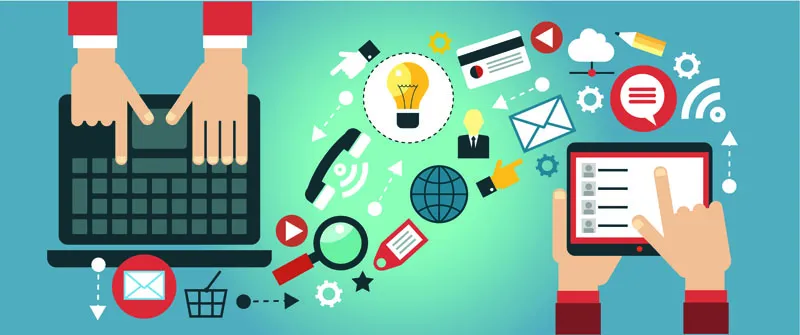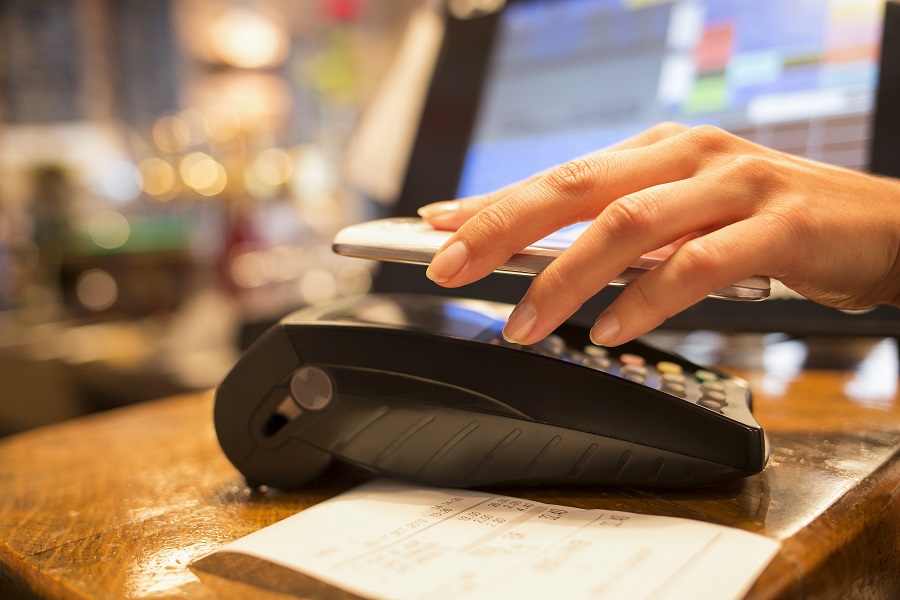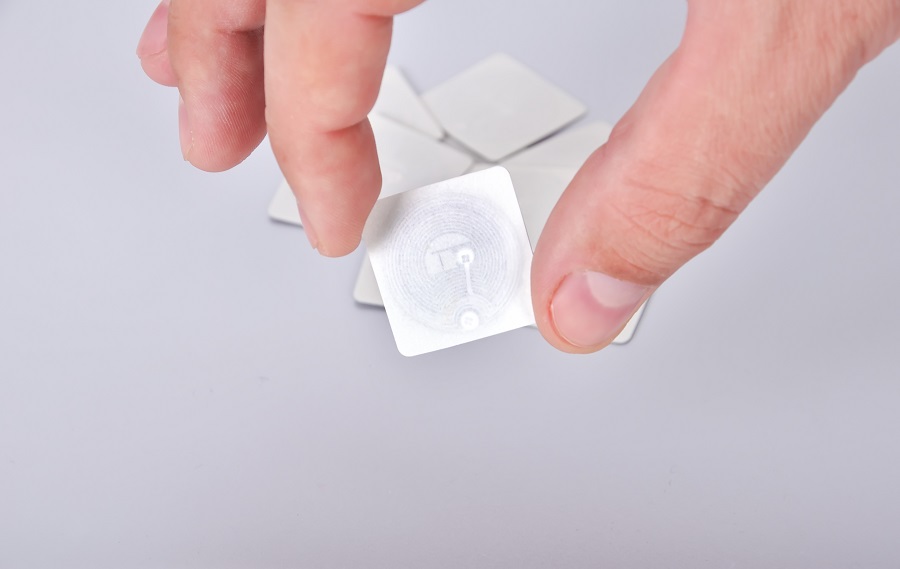
5 IT Tools for the Retail Business

Just a few years ago, domestic retailers from the whole variety of IT solutions used exclusively logistics, warehouse accounting and data storage systems, which made it possible to increase the efficiency of the sales department. Currently, increased competition among sellers against the backdrop of crisis expectations of buyers forces the first to look for new ways to fight for the customer. Therefore, such options as business analytics, cloud services, omni channels, etc. are becoming increasingly relevant. Almost the entire business of network retail companies today is not only tightly connected with IT, but also integrated into it.
Business analytics
According to experts, the total amount of information on the globe doubles annually. The same can be said of retail. Companies have to deal with an enormous amount of information - real-time data on sales, product availability in warehouses and retail outlets, information on prices and their changes, customer information and much more. According to Dmitry Tokar from CROC Such a volume of information for a company is both great complexity and huge opportunities. “The difficulty is that it is almost impossible to understand the data without professional business intelligence systems. However, with the help of modern solutions of the BI (Business Intelligence) class, it is possible to make forecasts for the movement of products, develop a variety of loyalty programs and stimulate demand. Nevertheless, not every retailer uses these opportunities today. And this is despite the fact that most of the BI systems from well-known world leaders (such as Oracle, SAP, IBM, Microsoft, etc.) have long been available on the Russian market ... "
 Pay by phone
Pay by phone
Integrated sales, or omni-channel service
Multichannel or integrated sales is a deeply integrated approach to creating a consumer experience through all available sales and communication channels: physical points of sale, the Internet, mobile devices, television and the media, direct mail, etc. In the last couple of years, omni-channel has become extremely hot and hot topic. Unfortunately, this innovation has not yet really taken root in domestic retail, since its successful implementation requires the integration of several sales channels and related information systems. So what is this? “The essence of the omni-channel concept is customer satisfaction here and now. In most cases, the desire of a particular person arises on the basis of public opinion. A person receives a signal about a product through the channel in the zone of influence of which he finds himself. Having received a signal, a person seeks to satisfy his desire as quickly as possible, cheaper and better. Accordingly, the task of trading is to maximally satisfy the desire of a potential client, - explains Sanjay Sauldi, Director of the European Academy of Internet Marketing, a renowned specialist in the field of Internet marketing. - With this in mind, omnichannel retail involves ensuring “seamless” integrated trading through all available sales channels, whether it’s an offline store, an online store, sales via mobile devices, sales via social networks, by phone or other other possible means. At the same time, the consumer should not feel the difference in the channels, purchasing goods in the way that is convenient for him at the moment, receiving and returning, if necessary, the goods where he is more comfortable ... "
This approach implies that, for example, by logging into Facebook in the morning using a laptop, you saw a pair of excellent boots on the link of the online store and placed an order; On the way to work, they decided that it was necessary to add a brush and shoe polish to the order and did it using a smartphone. After that, the office paid for the order webmoney from their virtual account, and in the evening on the way home they took their order in a special cell in the nearest supermarket. The main idea of this technology is to simplify communication between the service provider and the buyer, getting rid of the payment of unnecessary retail space, warehouses, etc.
“Omni-channel retail is simply not possible without a perfectly streamlined inventory management and distribution system,” warns Sanjay Sauldi. - This is due to the fact that, when delivering goods to a regular store, you are working with goods that should be in demand. And online you deliver goods that have already been purchased by the customer, and his expectations for delivery quality are much higher than the expectations of a faceless store. From this point of view, supply chain management is becoming not only more complex, but also more responsible. The client must receive the goods with the level of service that you guaranteed him from the beginning. The most important disappointment of the client is if he ordered, but he was not delivered or delivered at the wrong time. One of the biggest mistakes omnichannel marketing market is ignoring the importance of logistics! ”
Therefore, in order to ensure efficient operation via omi channels, domestic retailers must implement an IT solution that should automate their business, on the one hand, ensuring that potential customers receive the necessary product information through all possible communication channels (via the website, mobile application, Facebook , Instagram, etc.), the ability to order the necessary goods using any of these channels, then pay (by card, from your phone account, virtual money, etc.) and receive a purchase (by courier or pick up comfortable place). The implementation of such a project is quite time-consuming and costly, but according to US retailers, the successful implementation of omni-channel increases the sales volume by 3-4 times. At the same time, millions of dollars spent by a large company on a project may turn out to be ineffective in comparison with low-budget projects of small companies. “The secret to success is creativity,” Sanjay Sauldi advises. - If you are creative, you will always win. And if you have only money, you are unlikely to succeed. As a rule, simple solutions are of the highest quality and most affordable. In most cases, you can limit yourself to a small setup of the business process ... "
RFID Technology
RFID technology (Radio frequency identification, radio frequency identification) is one of the most promising IT solutions today. It allows, through the use of radio frequency tags, to identify certain goods and control their movements. Thanks to this, the seller is able to control the entire supply chain - from production to delivery to the consumer, while protecting the goods from theft. But the advantages of the technology are not limited to this. For example, by using RFID tags, sellers can make it as easy as possible for a buyer to buy goods in a store. The buyer simply types everything he needs into the basket (or even immediately into packages), at the exit from the store, a special device instantly scans all the tags and displays the total amount of the purchase. After that, the buyer can pay for the goods in any way convenient for him (by credit card, cash, using a special application for a smartphone, etc.). By the way, retail market experts claim that the American company Alien Technology implemented a similar pilot project for X5 a couple of years ago, but the technology has not yet been widely introduced. Most likely, retailers are stopped by the relatively high cost of RFID tags.
 RFID Technology
RFID Technology
“The cost of tags and equipment has been declining over the past 5 years. Tags are from 3,5 p. (China), against 16 p. in 2010 year. Equipment fell by 30-40%. Cost is not high or low. One should ask: “Is technology paying off in our business or not?” The technology can be used partially, where it is profitable. No need to use everywhere and throughout the assortment. The state is now actively involved in the implementation of RFID technologies. For example, the Ministry of Industry and Trade of the Russian Federation is implementing a research project on the introduction of mandatory labeling of light industry products with RFID tags. In Belarus, compulsory labeling in the "Shoes" category is valid. They are interested in expanding the practice to the entire Customs Union. The Eurasian Economic Commission has decided to introduce mandatory marking of fur products in the territory of the countries of the Customs Union in the 2015 year ... ”, commented Vladimir Komolov, Development Director, Shop of the Future. What will happen next? Time will tell!
Increased mobility
Every customer who visits the store has a smartphone or tablet with them. But this is a real "digital mobile terminal." By scanning the QR code, the client gets access to objective product reviews, expert recommendations, which works much better than an advertising message. However, it is logical to use this mobile device not only as a channel for sending personalized offers to the client (as we wrote above), but also use it to pay for the purchase. “A smartphone is a customer service tool in a store. Using our special application on your smartphone, you can select a product and add it to the basket. Product entry is possible through scanning a bar code, entering an article or product name. Indicate the required quantity of goods, if necessary, attach a customer loyalty card and place an order. Moreover, the order is transformed into an 1С check with the same number, so you will not have problems with reporting ... ”, explains Evgeny Bakhin, Inventive Retail Group. A smartphone with support for NFC technology can even pay for goods at the checkout in one touch, which means that the waiting time in the queue is reduced. In the coming years, self-service systems (Self-Ckeckout, Self-Checkout Convertible, etc.), electronic price tags, self-service scales with a touch monitor, “smart” shelves and carts will be massively introduced. Another innovation is considered to be “digital price tags”, which are able to automatically adjust prices for goods with expiring expiration dates, inform customers about new products and additional discounts. The introduction of self-service technologies in trade is considered in the West as one of the most effective methods of dealing with queues.
By introducing self-service systems, the retailer reduces queues and the loss of valuable time; increases the throughput of cash lines, attracts new ones and increases the loyalty of regular customers, improves the quality of service; optimizes the sales area, cash line and personnel; able to flexibly extend the opening hours of a shopping store and optimize staff work. And, best of all, such self-service systems are characterized by a high return on investment and a quick return on investment (usually within 1,5-2,5 years), as evidenced by international experience.
Full interactivity
Among the new opportunities for retail, it is worth noting the transformation of sales staff into personal cashiers, which allows you to avoid tedious lines at the cash desk and complete your shopping trip as quickly as possible. This technology has already been successfully tested by Apple and works in all its retail stores. At the same time, each seller has the opportunity to see stocks in real time, so that he immediately learns whether this product is available in this store or at the nearest outlet. Then, through his mobile terminal, he can rent your bank card, and then issue a purchase with a cashier's check.
Some companies have already begun to use indoor geolocation technologies. The information about where and when the goods were put in the basket or, more importantly, laid out of it, is truly invaluable to retailers and producers of consumer goods. Knowing the ways of the buyer’s movement through a huge hypermarket, one can completely plan the display of goods at a completely different qualitative level, select the desired shelf. Using Media Cart technology (with a system of sensors, sensors and a screen), Media Cart can not only collect analytical information, but also make targeted offers to the customer, depending on where in the store he is. It is enough for the client to approach a certain point of the store, when a profitable offer appears on the screen (mounted either on a trolley or on the wall), made taking into account his preferences and tastes. This is much more effective than traditional advertising, since more than 70% of purchase decisions are made directly at points of sale. By the way, the Chinese company SK Telecom even equipped its “smart carts” with an electronic shopping list. The device is able to synchronize with the buyer’s smartphone, suggest the location of certain goods, talk about discounts and special promotions and give detailed information about each product.
Since buyers almost ceased to react even to the most enticing static ads in stores, Western retailers began to use the so-called “virtual promoters”. They are obtained by projecting special content (including using 3D graphics) onto the rear projection screen. Such interactive "consultants" are able to work perfectly on brand recognition, and at the same time they have neither holidays nor weekends. Another plus of this technology is that the system responds to the proximity of the buyer and turns on only then, which can significantly save energy.
Another interesting approach is “virtual fitting rooms” or “augmented reality technology”. The camcorder scans the external parameters of the client in 3D, and the smart system offers three-dimensional clothing models that fit the figure. This technology allows you to quickly determine what exactly is suitable for the buyer, which increases the patency of the fitting rooms and reduces the average time of one purchase, which leads to a significant increase in turnover. This service was first offered at Philadelphia Airport in 2005. Intellifit created a kiosk where measurements were taken from the customer within 10 seconds (more than 200 000 parameters), based on which styles and clothing sizes were selected from the database of well-known brands.
What prevents the implementation of such innovations in retail? “It is often expensive, and the expected effect is not obvious and there may be no short-term return. There is an opinion that in Europe and the USA companies are fighting for 2% of profits, and in Russia less than 10% do not want to work. That is why retailers are in no hurry to “throw away” money on innovations and do not want to take risks and introduce promising technologies, preferring to learn from other people's mistakes and use only proven technologies ... ", Vladimir Sologubov sums up.
| Please rate the article |
Materials on the topic

Seven “sins” of the shoe business. How do owners harm the company with their own hands?

Why is it so important to work with customer reviews, analyze them and use them in your work?

How to implement sales funnels in the shoe business

Effective methods that will help improve the effectiveness of sellers

Service in the store: successes and mistakes
Popular
 Coach turned to Big Data analysis and won the interest of a young audience
American handbag brand Coach has planned the success of its Tabby model among a younger audience, Generation Z, by turning to big data analysis, abandoning traditional and analogue tools, such as human intuition or the ability of any executive to sense “which way the wind will blow,” writes B.O.F.
Coach turned to Big Data analysis and won the interest of a young audience
American handbag brand Coach has planned the success of its Tabby model among a younger audience, Generation Z, by turning to big data analysis, abandoning traditional and analogue tools, such as human intuition or the ability of any executive to sense “which way the wind will blow,” writes B.O.F.
 IDOL updates the concept
The IDOL brand, part of the Melon Fashion Group portfolio, opened the first flagship in an updated concept in the Aviapark shopping center in Moscow.
IDOL updates the concept
The IDOL brand, part of the Melon Fashion Group portfolio, opened the first flagship in an updated concept in the Aviapark shopping center in Moscow.
 Seven “sins” of the shoe business. How do owners harm the company with their own hands?
Why is Company X able to create a strong, profitable brand, but Company Y is struggling to make ends meet? Many people prefer to attribute success to luck, luck, or the support of strong patrons. And few people ask themselves the question: “What am I doing wrong?” Moreover, many entrepreneurs begin to harm their business from the first day of its opening. In this article, together with SR expert in the field of fashion business management and development, Maria Gerasimenko, we will look at the 7 main “sins” that business owners commit using specific examples.
Seven “sins” of the shoe business. How do owners harm the company with their own hands?
Why is Company X able to create a strong, profitable brand, but Company Y is struggling to make ends meet? Many people prefer to attribute success to luck, luck, or the support of strong patrons. And few people ask themselves the question: “What am I doing wrong?” Moreover, many entrepreneurs begin to harm their business from the first day of its opening. In this article, together with SR expert in the field of fashion business management and development, Maria Gerasimenko, we will look at the 7 main “sins” that business owners commit using specific examples.
 Louis Vuitton opens a new factory in Italy
Louis Vuitton has opened its second shoe factory in Italy. After opening the first one in Fiesso d'Artico in Veneto, the LVMH flagship brand has just opened a new production site dedicated to this category of footwear in the industrial zone of Civitano in the Marche region. There is also another brand production facility in Tuscany, where bags and leather accessories are produced, writes fr.fashionnetwork.com.
Louis Vuitton opens a new factory in Italy
Louis Vuitton has opened its second shoe factory in Italy. After opening the first one in Fiesso d'Artico in Veneto, the LVMH flagship brand has just opened a new production site dedicated to this category of footwear in the industrial zone of Civitano in the Marche region. There is also another brand production facility in Tuscany, where bags and leather accessories are produced, writes fr.fashionnetwork.com.
 The Euro Shoes@CAF exhibition will be held in Almaty
From March 11 to 13, the Euro Shoes@CAF (Central Asia Fashion) exhibition will be held in Almaty at the Atakent exhibition complex. The exhibition, which is the largest international event in the fashion industry in Central Asia, will present collections of clothing, shoes and accessories.
The Euro Shoes@CAF exhibition will be held in Almaty
From March 11 to 13, the Euro Shoes@CAF (Central Asia Fashion) exhibition will be held in Almaty at the Atakent exhibition complex. The exhibition, which is the largest international event in the fashion industry in Central Asia, will present collections of clothing, shoes and accessories.
 Euro Shoes will start operating on February 19 in Moscow!
The winter session of the international exhibition of footwear and accessories Euro Shoes premiere collection will be held in Moscow at the Expocenter from February 19 to 22. The organizers promise the presence of all the main participants at the exhibition, as well as new names from Europe, Asia and Russia.
Euro Shoes will start operating on February 19 in Moscow!
The winter session of the international exhibition of footwear and accessories Euro Shoes premiere collection will be held in Moscow at the Expocenter from February 19 to 22. The organizers promise the presence of all the main participants at the exhibition, as well as new names from Europe, Asia and Russia.
 American buyers couldn't buy Birkin bags and sued Hermès
French fashion house Hermès is facing a lawsuit in California from two customers who were unable to purchase exclusive Birkin bags. The fashion house is accused of unfair commercial practices.
American buyers couldn't buy Birkin bags and sued Hermès
French fashion house Hermès is facing a lawsuit in California from two customers who were unable to purchase exclusive Birkin bags. The fashion house is accused of unfair commercial practices.
 Why Rendez-Vous and Yandex Lavka released a “bread bag”
Shoe retailer Rendez-Vous announced the launch of a spring collaboration with Yandex Lavka and released a roll that resembles the shape of a woman’s handbag. This “Bread Bag” is presented in the Yandex.Lavka application at a price of 249 rubles. On the product packaging there is a promotional code for 1000 rubles, which can be spent in the Rendez-Vous network.
Why Rendez-Vous and Yandex Lavka released a “bread bag”
Shoe retailer Rendez-Vous announced the launch of a spring collaboration with Yandex Lavka and released a roll that resembles the shape of a woman’s handbag. This “Bread Bag” is presented in the Yandex.Lavka application at a price of 249 rubles. On the product packaging there is a promotional code for 1000 rubles, which can be spent in the Rendez-Vous network.
 Camper has released innovative sneakers - designers
Spanish brand Camper's new Roku sneaker features six interchangeable components to create up to 64 different looks and color combinations. Roku means "six" in Japanese.
Camper has released innovative sneakers - designers
Spanish brand Camper's new Roku sneaker features six interchangeable components to create up to 64 different looks and color combinations. Roku means "six" in Japanese.
 Christian Louboutin presented a collection in a cowboy style
At the Loubi Show in Paris, the French luxury brand Christian Louboutin presented its fall 2024 collection, following the trend - in the style of the Wild West. It included cowboy boots and rhinestone loafers.
Christian Louboutin presented a collection in a cowboy style
At the Loubi Show in Paris, the French luxury brand Christian Louboutin presented its fall 2024 collection, following the trend - in the style of the Wild West. It included cowboy boots and rhinestone loafers.
 Turkish brand Vaneda on Euro Shoes
Street style, sport, outdoor, military – the main style directions of footwear of the company from Turkey
Turkish brand Vaneda on Euro Shoes
Street style, sport, outdoor, military – the main style directions of footwear of the company from Turkey
 Fashion Week takes place in Moscow
Fashion Week takes place in the Russian capital. Events include fashion shows, markets where you can purchase clothes, bags and accessories, and a B2B Showroom for fashion industry professionals.
Fashion Week takes place in Moscow
Fashion Week takes place in the Russian capital. Events include fashion shows, markets where you can purchase clothes, bags and accessories, and a B2B Showroom for fashion industry professionals.
 Kari accuses Zenden of unfair competition and is suing the FAS
The largest Russian shoe chain, Kari, appealed to the Moscow Arbitration Court to declare the actions of the Federal Antimonopoly Service (FAS) illegal, writes RBC.
Kari accuses Zenden of unfair competition and is suing the FAS
The largest Russian shoe chain, Kari, appealed to the Moscow Arbitration Court to declare the actions of the Federal Antimonopoly Service (FAS) illegal, writes RBC.
 Fashion trends Fall-Winter 2023/24 for commercial footwear purchases
Permanent contributor to Shoes Report. Elena Vinogradova, an expert in sales and purchases in the fashion business, prepared an overview of the trends for the autumn-winter 2023/24 season especially for us.
Fashion trends Fall-Winter 2023/24 for commercial footwear purchases
Permanent contributor to Shoes Report. Elena Vinogradova, an expert in sales and purchases in the fashion business, prepared an overview of the trends for the autumn-winter 2023/24 season especially for us.
 MSCHF and Crocs launch "Big Yellow Boots"
Creator of the Big Red Boots, Brooklyn brand MSCHF has teamed up with American plastic clog and sandal brand Crocs for another oversized shoe. The new Big Yellow Boots will go on sale on August 9th.
MSCHF and Crocs launch "Big Yellow Boots"
Creator of the Big Red Boots, Brooklyn brand MSCHF has teamed up with American plastic clog and sandal brand Crocs for another oversized shoe. The new Big Yellow Boots will go on sale on August 9th.
 Five rules of professional lighting for a shoe store - something that is relevant in any season
When developing a lighting concept for shoe retailers, it is important to take into account not only the history of the brand, the architectural content of the premises, the target audience of the stores, but also the seasonality of the goods. With the onset of the cold season, client preferences change: bright weightless shoes are replaced by more massive models in discreet dark colors. Despite significant differences in summer and winter collections, the overall philosophy of the brand, its recognition should remain unchanged at any time of the year. Tatyana Ryzhova, an SR lighting expert in fashion retail, has identified five basic rules for a competent lighting concept for a shoe store for readers of the magazine, which will help to present winter assortment to customers in a winning way.
Five rules of professional lighting for a shoe store - something that is relevant in any season
When developing a lighting concept for shoe retailers, it is important to take into account not only the history of the brand, the architectural content of the premises, the target audience of the stores, but also the seasonality of the goods. With the onset of the cold season, client preferences change: bright weightless shoes are replaced by more massive models in discreet dark colors. Despite significant differences in summer and winter collections, the overall philosophy of the brand, its recognition should remain unchanged at any time of the year. Tatyana Ryzhova, an SR lighting expert in fashion retail, has identified five basic rules for a competent lighting concept for a shoe store for readers of the magazine, which will help to present winter assortment to customers in a winning way.
 I doubt and object: how to find an approach to difficult clients?
How good and serene would be the work of a salesperson if the customers were calm, cheerful, always knew exactly what they wanted, and bought, bought, bought! It is a pity that this is possible only in dreams. Therefore, we will not dream, but we will act. Together with Maria Gerasimenko, a permanent author of SR, we understand the doubts and objections of buyers and build a strategy for working with them. Our expert pays special attention to the two main objections of buyers, on which 82% of sales are lost.
I doubt and object: how to find an approach to difficult clients?
How good and serene would be the work of a salesperson if the customers were calm, cheerful, always knew exactly what they wanted, and bought, bought, bought! It is a pity that this is possible only in dreams. Therefore, we will not dream, but we will act. Together with Maria Gerasimenko, a permanent author of SR, we understand the doubts and objections of buyers and build a strategy for working with them. Our expert pays special attention to the two main objections of buyers, on which 82% of sales are lost.
 EURO SHOES presents an updated section of the GLOBAL SHOES exhibition with collections of shoe and bag brands from Asian countries
EURO SHOES premiere collection is expanding. Along with the traditional pool of leading European footwear brands from Germany, Spain, Italy and Turkey, several dozen footwear and bag brands from the Middle Kingdom will be presented in the GLOBAL SHOES section at the Moscow Expocentre from August 29 to September 1.
EURO SHOES presents an updated section of the GLOBAL SHOES exhibition with collections of shoe and bag brands from Asian countries
EURO SHOES premiere collection is expanding. Along with the traditional pool of leading European footwear brands from Germany, Spain, Italy and Turkey, several dozen footwear and bag brands from the Middle Kingdom will be presented in the GLOBAL SHOES section at the Moscow Expocentre from August 29 to September 1.
 World Footwear Yearbook: Global footwear production reaches 23,9 billion pairs and is back to pre-pandemic levels
The Portuguese association of shoe manufacturers APICCAPS published the 13th edition of the international statistical bulletin World Footwear Yearbook for 2023, according to which in 2022 the production and export of shoes worldwide increased by 7,6% and 9%, respectively, and the world production of shoes reached 23,9 billion couples and returned to pre-pandemic levels.
World Footwear Yearbook: Global footwear production reaches 23,9 billion pairs and is back to pre-pandemic levels
The Portuguese association of shoe manufacturers APICCAPS published the 13th edition of the international statistical bulletin World Footwear Yearbook for 2023, according to which in 2022 the production and export of shoes worldwide increased by 7,6% and 9%, respectively, and the world production of shoes reached 23,9 billion couples and returned to pre-pandemic levels.
 Rostov footwear brand Novak presented a collection of sneakers and sneakers
In the spring-summer 2023 season, the Rostov-on-Don shoe brand Novak presented a cute collection of sneakers and sneakers for every day. The upper of the shoe is made of genuine leather, suede, nubuck, the sole is made of light EVA.
Rostov footwear brand Novak presented a collection of sneakers and sneakers
In the spring-summer 2023 season, the Rostov-on-Don shoe brand Novak presented a cute collection of sneakers and sneakers for every day. The upper of the shoe is made of genuine leather, suede, nubuck, the sole is made of light EVA.
 Jacquemus x Nike collaboration released
The second collaboration between Jacquemus and Nike, which has been talked about so much, is finally out. The appearance of the couple for many was a surprise. The model of Nike Air Force 1 sneakers, which was taken as the basis of the new collection, has undergone significant changes.
Jacquemus x Nike collaboration released
The second collaboration between Jacquemus and Nike, which has been talked about so much, is finally out. The appearance of the couple for many was a surprise. The model of Nike Air Force 1 sneakers, which was taken as the basis of the new collection, has undergone significant changes.
 Crocs releases a collaboration with Barbie
If Barbie ditched heels and wore crocs, they would be pink. It was this collection in pink that was released by the American brand of plastic clogs Crocs, for the release of the film "Barbie" in the United States.
Crocs releases a collaboration with Barbie
If Barbie ditched heels and wore crocs, they would be pink. It was this collection in pink that was released by the American brand of plastic clogs Crocs, for the release of the film "Barbie" in the United States.
 Japanese BAPE takes to the catwalk MSCHF Big Red Boots
The story of Brooklyn brand MSCHF's oversized rubber boots continues. The last time they made noise in the auditorium was at the Rick Owens menswear show. Now they have already appeared on the podium.
Japanese BAPE takes to the catwalk MSCHF Big Red Boots
The story of Brooklyn brand MSCHF's oversized rubber boots continues. The last time they made noise in the auditorium was at the Rick Owens menswear show. Now they have already appeared on the podium.
 Shoe educational program: what shoe soles are made of
“What is the difference between TEP and EVA? What does tunit promise me? Is PVC glue? What is the sole of these shoes made of? ”- the modern buyer wants to know everything. In order not to smash his face in front of him and be able to explain whether such a sole suits him in soles, carefully read this article. In it, process engineer Igor Okorokov tells what materials the soles of shoes are made of and what makes each of them so good.
Shoe educational program: what shoe soles are made of
“What is the difference between TEP and EVA? What does tunit promise me? Is PVC glue? What is the sole of these shoes made of? ”- the modern buyer wants to know everything. In order not to smash his face in front of him and be able to explain whether such a sole suits him in soles, carefully read this article. In it, process engineer Igor Okorokov tells what materials the soles of shoes are made of and what makes each of them so good.
 How to set prices that will earn
Some businessmen still confuse the concept of margin with the concept of trade margins and set prices for their goods, guided solely by the example of competitors. No wonder they go broke! Analyst at the Academy of Retail Technologies Maxim Gorshkov gives several tips and formulas with which you can set not only ruinous, but also profitable prices.
How to set prices that will earn
Some businessmen still confuse the concept of margin with the concept of trade margins and set prices for their goods, guided solely by the example of competitors. No wonder they go broke! Analyst at the Academy of Retail Technologies Maxim Gorshkov gives several tips and formulas with which you can set not only ruinous, but also profitable prices.
 Sales of shoes and accessories: effective techniques for business rhetoric
Which speech modules are effective in communicating with potential and current customers of shoe stores, and which are not, Anna Bocharova, a business consultant, knows.
Sales of shoes and accessories: effective techniques for business rhetoric
Which speech modules are effective in communicating with potential and current customers of shoe stores, and which are not, Anna Bocharova, a business consultant, knows.
 We form the salary of sellers: expert advice
“How do you charge your consultants for personal or general sales?” Is one of the most popular questions causing a lot of controversy and gossip on the online forums of retail business owners. Indeed, how to properly form the earnings of sellers? But what about bonuses, where to get a sales plan from, do employees allow them to buy goods at discounted stores? In search of truth, the Shoes Report turned to a dozen shoe retailers, but no company wanted to disclose its motivation system - the process of its development was too complicated and individual. Then we asked four business consultants, and finally became convinced that the topic of seller motivation is very complex, because even our experts could not come to a common opinion.
We form the salary of sellers: expert advice
“How do you charge your consultants for personal or general sales?” Is one of the most popular questions causing a lot of controversy and gossip on the online forums of retail business owners. Indeed, how to properly form the earnings of sellers? But what about bonuses, where to get a sales plan from, do employees allow them to buy goods at discounted stores? In search of truth, the Shoes Report turned to a dozen shoe retailers, but no company wanted to disclose its motivation system - the process of its development was too complicated and individual. Then we asked four business consultants, and finally became convinced that the topic of seller motivation is very complex, because even our experts could not come to a common opinion.
 Technology Selling Issues
There is nothing worse than meeting the buyer with the words “Hello, can I help you with something?”, Because the seller works in the store just to help. Criticizing this well-established pattern of communication with the buyer, Andrei Chirkarev, business coach for effective sales and the founder of the New Economy project, shares the technology of truly selling issues with readers of Shoes Report.
Technology Selling Issues
There is nothing worse than meeting the buyer with the words “Hello, can I help you with something?”, Because the seller works in the store just to help. Criticizing this well-established pattern of communication with the buyer, Andrei Chirkarev, business coach for effective sales and the founder of the New Economy project, shares the technology of truly selling issues with readers of Shoes Report.
 The whole truth about Bayer. Who is he and how to become one?
Bayer is no longer a new, but still a popular and sought-after profession. It’s fashionable to be a buyer. Buyers are at the origins of the emergence and development of trends. If the designer offers his vision of fashion in the season, then the buyer selects the most interesting commercial ideas. It is on buyers that the policy of sales of stores and what, in the end, the buyer will wear depends on. This profession is surrounded by a magical fleur, often associated with a lack of understanding of what exactly is the work of a buyer.
The whole truth about Bayer. Who is he and how to become one?
Bayer is no longer a new, but still a popular and sought-after profession. It’s fashionable to be a buyer. Buyers are at the origins of the emergence and development of trends. If the designer offers his vision of fashion in the season, then the buyer selects the most interesting commercial ideas. It is on buyers that the policy of sales of stores and what, in the end, the buyer will wear depends on. This profession is surrounded by a magical fleur, often associated with a lack of understanding of what exactly is the work of a buyer.
 Fur, and not only: types of lining
In the production of winter footwear, various materials are used that are designed to retain heat and meet the requirements of consumers: natural sheepleather, artificial fur, artificial fur from natural wool and others. All types of lining fur have their own advantages and disadvantages. Let's consider the properties of each of them.
Fur, and not only: types of lining
In the production of winter footwear, various materials are used that are designed to retain heat and meet the requirements of consumers: natural sheepleather, artificial fur, artificial fur from natural wool and others. All types of lining fur have their own advantages and disadvantages. Let's consider the properties of each of them.
 Retail Arithmetic
Before you begin to solve specific problems, you need to find out how accurately all the leaders of your company understand the basic terminology of retail.
Retail Arithmetic
Before you begin to solve specific problems, you need to find out how accurately all the leaders of your company understand the basic terminology of retail.
 How to fire a worker without tears, scandal and trial
Sooner or later, any manager is faced with the need to part with an employee. Properly and on time the dismissal procedure will save the company money, and the boss himself - nerves and time. But why sometimes, knowing that a break in relations is inevitable, we put off the decision for months?
How to fire a worker without tears, scandal and trial
Sooner or later, any manager is faced with the need to part with an employee. Properly and on time the dismissal procedure will save the company money, and the boss himself - nerves and time. But why sometimes, knowing that a break in relations is inevitable, we put off the decision for months?






